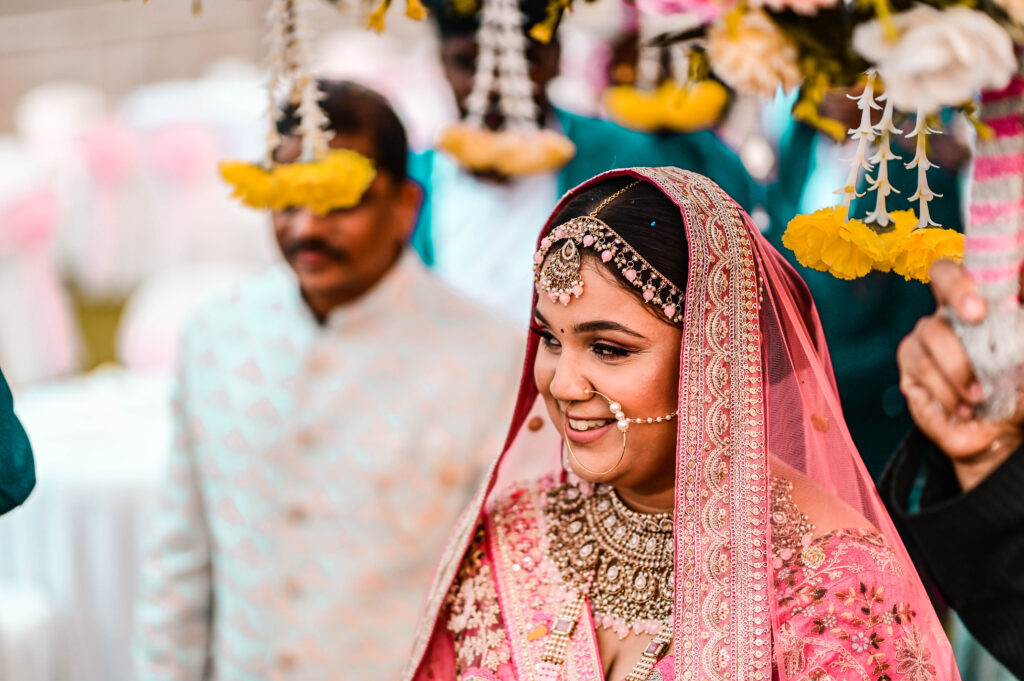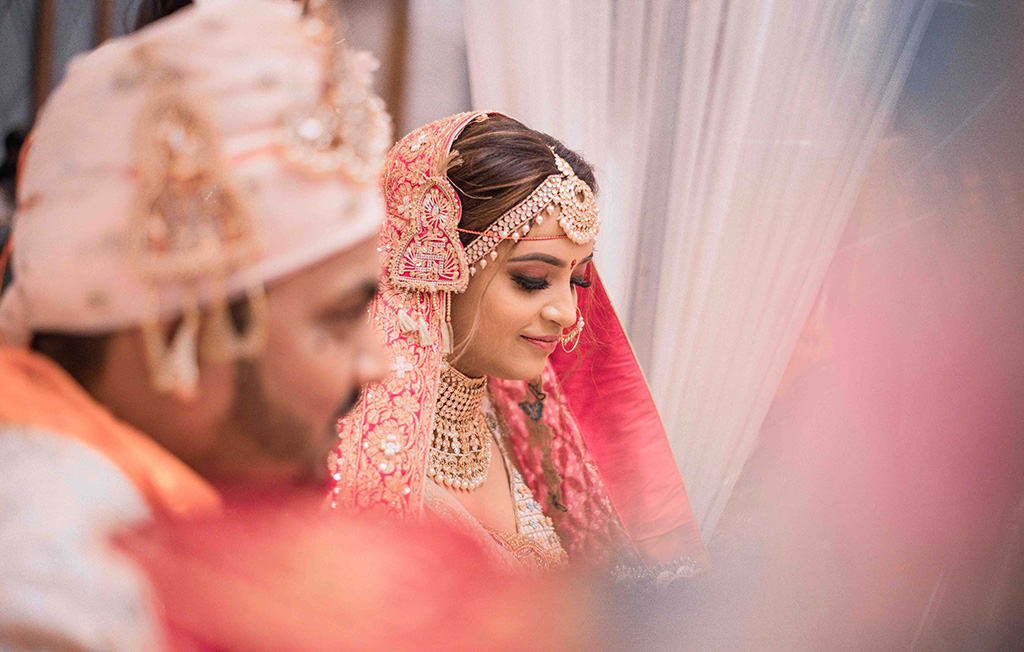wedding photography is one of the most crucial components of a couple’s special day. Not only does it serve as a way to immortalize precious moments, but it also tells a visual story of the couple’s journey, love, and celebration. However, wedding photography isn’t just about capturing beautiful images—it’s also about managing time, anticipating key moments, and sticking to a tight schedule. Effective timeline management and scheduling are essential to ensure that no important shots are missed, and everything runs smoothly.
As a wedding photography, the ability to manage time is as critical as technical expertise and creativity. Every wedding day is unique, but they all follow a similar structure, which can present challenges for wedding photography who must juggle multiple events, locations, and unexpected disruptions. In this article, we will delve into the critical aspects of timeline management and scheduling in wedding photography, offering tips and strategies that can help ensure a seamless and successful wedding day photography experience.
Understanding the Importance of Timeline Management wedding photography
Timeline management in wedding photography is more than just creating a schedule—it’s about ensuring that every key moment is captured in the most effective manner while adhering to the couple’s preferences, respecting the flow of the event, and adjusting as needed. By managing the timeline effectively, the photographer can ensure that all of the essential moments—such as the ceremony, first look, family portraits, first dance, and candid shots—are captured perfectly.
A wedding timeline typically includes multiple stages, from pre-ceremony moments like bride and groom preparations, to post-ceremony events like family photos and the reception. The wedding photography must navigate between these moments, adjusting to changes and unforeseen delays while delivering high-quality images without rushing or sacrificing creativity.
In this article, we will explore the following aspects of timeline management and scheduling for wedding photographers:
- Pre-Wedding Preparation and Planning
- Creating a Realistic Timeline
- Working with Clients and Wedding Planners
- Handling Delays and Unexpected Changes
- Efficiently Managing Multiple Locations
- Dealing with Time Constraints for Family Photos
- Maximizing Time for Candid Shots
- Post-Wedding Timeline Considerations
Each of these elements plays a vital role in ensuring that the photographer not only captures the best moments but also delivers a wedding album that tells a complete, beautiful, and meaningful story.

1. Pre-Wedding Preparation and Planning wedding photography
The foundation for effective timeline management begins long before the wedding day. As a wedding photography, it is crucial to establish communication with the couple, wedding planner, and other vendors to ensure that everyone is aligned regarding the schedule.
Understanding the Wedding Day Flow wedding photography
The first step is to gather as much information as possible about the wedding day. This involves discussing the wedding’s logistics, understanding the couple’s priorities, and having a clear idea of what the couple envisions for their wedding photos. Many couples will have specific moments they want to be captured, such as the bride walking down the aisle or candid shots during the reception. It is also essential to know about the venues, the number of guests, and any special details the couple wishes to include.
Creating a Pre-Wedding Checklist wedding photography
A comprehensive pre-wedding checklist is a must for the wedding photography. This checklist should include key shots the couple wants, as well as a list of people involved in the wedding (family members, bridal party, etc.). Photographers should also ask for a detailed timeline of the day, including preparation times, ceremony timing, dinner, speeches, and dance performances.
Some additional points to consider for preparation include:
- Equipment Check: The photographer should make sure all their gear is in top condition, including cameras, lenses, lighting, batteries, memory cards, and backup equipment.
- Backup Plan for Outdoor Weddings: In case of inclement weather, it’s crucial to have a backup location arranged or discuss contingency plans with the couple.
- Venue Walkthrough: If possible, do a walkthrough of the ceremony and reception venues before the big day to become familiar with the spaces, potential obstacles, and best angles for shooting.
2. Creating a Realistic Timeline wedding photography
Once the pre-wedding preparation is in place, it’s time to develop a realistic timeline. A wedding day can span from early morning preparations to late-night celebrations, and photographers must carefully allocate time for each event.
Elements of a Typical Wedding Timeline wedding photography
Here is a general outline of a typical wedding timeline:
- Bride and Groom Preparation: The day usually begins with both the bride and groom getting ready for the ceremony. The photographer should capture moments like the bride’s makeup, hair, dress, and the groom’s suit fitting.
- First Look: Some couples choose to do a “first look” before the ceremony, which is a private moment where the couple sees each other for the first time on their wedding day. This is a great opportunity for intimate and emotional photographs.
- Ceremony: The ceremony is the most important part of the wedding day, where the couple exchanges vows and rings. Photographers must be prepared to capture key moments such as the processional, vows, kiss, and recessional.
- Post-Ceremony Portraits: After the ceremony, wedding photography typically take portraits of the bride and groom, bridal party, and immediate family members.
- Reception: The reception includes speeches, the first dance, cake cutting, and dancing. Photographers should capture candid moments and any special events that unfold.
- Late-Night Dancing and Farewell: The final moments of the wedding are often filled with laughter and dancing. Photographers should be ready to capture the energy of the reception before the couple’s grand exit.
Time Allocation and Flexibility wedding photography
When creating a timeline, the photographer should allocate enough time for each part of the day, but it’s equally important to remain flexible. Weddings rarely run according to plan, and delays or last-minute changes are common. Therefore, building buffer time between events can prevent rushed or missed shots.
For example, while a typical portrait session may take 30-45 minutes, the photographer should allow 60 minutes in case of delays, outfit changes, or unforeseen circumstances. Similarly, when scheduling family portraits, it’s wise to include extra time for organizing family members and making adjustments to groupings.
3. Working with Clients and Wedding Planners wedding photography
Collaboration with the couple and the wedding planner is essential to ensure that the wedding photography timeline aligns with the overall event schedule. It’s important for the photographer to work closely with these individuals, ensuring that everyone is on the same page regarding timing, logistics, and expectations.
Discussing Priorities wedding photography
The couple may have certain moments they want to prioritize, such as capturing portraits at sunset, or taking photos in a specific location. Wedding planners also have a detailed timeline for the event, and the photographer should incorporate those into their planning.
It is beneficial to schedule meetings or phone calls with the couple and planner prior to the wedding to ensure that everyone is aligned. Clear communication will help the photographer anticipate the flow of the day and adapt to changes as they occur.
4. Handling Delays and Unexpected Changes wedding photography
Despite careful planning, delays and unexpected changes are inevitable. Weddings are complex events, and various factors can throw off the schedule. For example, a wedding may run late due to extended hair and makeup sessions, a bride’s dress getting caught, or a vendor arriving late. Photographers must be prepared to adapt and manage their time to ensure that key moments are captured.
Quick Thinking and Adaptability wedding photography
One way to handle delays is to stay proactive. If the photographer is aware of delays in advance, they can adjust their approach. For instance, if the bride’s preparations run late, the wedding photography can focus on capturing the groom’s getting ready shots first.
If a major part of the timeline gets delayed (such as the ceremony), the photographer can adjust by taking advantage of moments that arise naturally, such as candid shots of the guests or family members. Having a mental checklist of critical moments ensures that no important shots are overlooked.
Communicating with the Couple and Wedding Planner wedding photography
If delays occur, the wedding photography should keep the couple and wedding planner informed about the timeline adjustments. Communicating clearly and promptly ensures that everyone is aware of what to expect and can make necessary accommodations.
5. Efficiently Managing Multiple Locations wedding photography
Weddings often involve multiple locations, such as getting ready at different venues, a ceremony at a church, and a reception at a separate site. Managing travel time between these locations can be a logistical challenge, especially in a busy city or a remote location.
Planning for Travel Time wedding photography
To ensure timely arrival at each location, the wedding photography must factor in travel time, including potential traffic, parking, or walking distances. Having a clear understanding of the layout of the venues is crucial, as well as knowing how much time it will take to get from one place to another. It’s also wise to arrive at each location early to prepare and scout for the best spots to shoot.
If the wedding takes place in a large venue or city, the photographer may want to have an assistant or second shooter to help manage different locations and angles.
6. Dealing with Time Constraints for Family Photos wedding photography
Family and group portraits are an essential part of wedding photography, but they often come with time constraints. With multiple family members and guests to organize, the photographer must work efficiently to capture all the desired groupings without taking up too much of the couple’s precious time.
Prioritizing Family Photos wedding photography
The photographer should discuss the family photo list with the couple ahead of time, so they know which family members are to be included. These shots should be planned and organized in advance to minimize time spent on family portraits.
To maximize efficiency, the photographer can create a shot list with specific family members and groupings. Having someone assist with organizing family members can also help streamline the process.
7. Maximizing Time for Candid Shots wedding photography
Candid shots are a hallmark of great wedding photography. These are the moments where guests laugh, smile, and share intimate interactions. Capturing these moments is an art, but it requires the photographer to remain observant and patient.
While scheduled portrait sessions take up specific time slots, candid moments happen spontaneously. The photographer must keep an eye on the action, making sure to balance posed shots with natural moments as they unfold.
Strategies for Candid Photography wedding photography
- Staying in the Moment: Wedding photographers should remain alert and in the moment, looking for genuine interactions between the couple, family, and guests.
- Capturing Natural Moments: Often, the best candid moments happen when people are unaware of the photographer’s presence, so it’s important for photographers to be discreet and unobtrusive.
- Using a Second Shooter: If possible, having a second shooter can help cover multiple angles and increase the chances of capturing genuine, candid shots.
8. Post-Wedding Timeline Considerations wedding photography
After the wedding day is over, the photographer still plays a role in delivering the final product. Post-wedding timeline management includes editing
and delivering photos to the couple in a timely manner. wedding photography should set expectations with the couple regarding the turnaround time for their wedding gallery.
By maintaining a structured workflow, the photographer can ensure the editing process is smooth and that the final product is delivered as promised.
1. Timeline Management and Scheduling wedding photography
One of the most significant logistical challenges in wedding photography is managing the timeline of events throughout the day. Weddings are inherently time-sensitive, with various activities and moments taking place in a set sequence. From the bride’s preparation in the morning to the ceremony, reception, and final farewell, the photographer must be aware of the entire timeline and anticipate what’s coming next.
Key Challenges in Timeline Management: wedding photography
- Tight Schedules: Weddings are packed with events, many of which must be timed precisely. The photographer needs to be in the right place at the right time to capture key moments like the first look, the exchange of vows, and the first kiss. These moments are time-sensitive, and missing them can mean lost opportunities for irreplaceable photos.
- Overlapping Events: During weddings, there are often multiple events happening simultaneously. For example, the bride and groom may be getting ready in separate locations, while guests arrive at the ceremony venue. The photographer may need to split their time between different locations, ensuring they don’t miss key moments.
- Delays: Delays are common at weddings due to unforeseen circumstances, such as guests running late or delays in hair and makeup appointments. If a photographer doesn’t have a flexible approach to managing delays, it can throw off the entire schedule and result in missing essential shots.
Solutions for Timeline Management: wedding photography
- Pre-Wedding Planning: Successful timeline management starts with thorough pre-wedding planning. Photographers should collaborate with the couple, wedding planners, and coordinators to create a detailed schedule that includes specific times for each part of the wedding day. This can help the photographer anticipate when and where to be for key moments.
- Buffer Time: It’s essential for photographers to build buffer time into their schedules. Wedding timelines rarely go exactly as planned, so having extra time to work with ensures that delays don’t result in rushed or missed photos.
- Communication: Constant communication with the couple and wedding planner throughout the day can help the photographer stay on track and adjust the timeline if needed. By staying connected, the photographer can receive updates if events are delayed or if the couple’s preferences change during the day.
2. Dealing with Unpredictable Weather wedding photography
Weather is one of the most unpredictable elements that wedding photography must contend with, especially for outdoor weddings. Whether it’s an outdoor ceremony, portraits in a scenic location, or a reception under the open sky, weather conditions can drastically affect the outcome of the photos. Photographers must be prepared to work with or around bad weather without sacrificing the quality of their shots.
Key Challenges with Weather: wedding photography
- Rain and Wet Conditions: Rain can ruin outdoor wedding photos, especially if there isn’t an indoor backup location. If rain is expected, photographers need to be prepared with equipment protection and have a plan for shooting in adverse conditions.
- Lighting: Lighting is critical in photography, and unpredictable weather can alter natural light conditions. Overcast skies, harsh sunlight, or rapidly changing light due to weather conditions can make it challenging to capture photos with the best lighting.
- Wind: Strong winds can interfere with outdoor ceremonies, especially for brides with elaborate veils or dresses. Photographers must be ready to adjust their angles and positions to minimize the effect of wind on the bride’s dress or hair.
Solutions for Weather Challenges: wedding photography
- Backup Plan: It’s crucial to have a backup plan for outdoor events. wedding photography should discuss with the couple and wedding planner what will happen if the weather doesn’t cooperate. This might include an indoor location for portraits or moving the ceremony indoors if needed.
- Adaptability: Photographers need to be adaptable and ready to work in any weather condition. If it’s raining, photographers can embrace the rain and capture creative shots with umbrellas or reflections in puddles. Overcast skies often provide soft, flattering lighting, so the photographer can take advantage of that.
- Equipment Protection: In case of rain, it’s important to have protective gear for the camera and lenses, such as weatherproof camera covers or plastic bags. Photographers should also ensure their equipment is regularly maintained to withstand harsh weather conditions.

3. Venue Layout and Space Constraints wedding photography
Wedding venues come in all shapes and sizes, and wedding photography must be able to navigate and adapt to varying spatial constraints and layouts. Whether the wedding takes place in a grand ballroom, a small chapel, or a rustic barn, the venue can present several logistical challenges for photographers, especially when space is limited.
Key Challenges with Venue Layout: wedding photography
- Crowded Spaces: Small or cramped venues may make it difficult for the wedding photography to move around freely to get the best angles or capture candid shots of the couple and guests. Large crowds or tight spaces can create obstacles for capturing the action, particularly during key moments like the ceremony or first dance.
- Limited Lighting: Many wedding venues have challenging lighting conditions, such as dimly lit areas or harsh artificial lighting. Photographers must adapt their equipment and techniques to overcome these limitations and ensure high-quality photos.
- Obstructions: Some venues may have obstructions that block the photographer’s line of sight, such as columns, furniture, or large decor. These can hinder the photographer’s ability to capture the perfect shot, particularly in key moments like the vows or first kiss.
Solutions for Venue Layout Challenges: wedding photography
- Pre-Visit the Venue: If possible, wedding photography should visit the venue ahead of time to familiarize themselves with the layout. This will allow them to plan where to position themselves for the best shots during key moments.
- Scout for Angles: During the event, wedding photography should take note of vantage points that provide unobstructed views of the ceremony and reception. Being aware of the best angles in advance allows the photographer to adjust quickly when needed.
- Flash and Lighting Equipment: To combat dim lighting, wedding photography can use flash or additional lighting equipment, such as off-camera flash or continuous lighting. Understanding the best lighting setup for a venue will ensure high-quality photos even in challenging conditions.
4. Managing Large Groups and Family Photos wedding photography
Family and group photos are an essential part of wedding photography, but they present several logistical challenges, especially when managing large groups of people. Coordinating who should be in each shot, ensuring everyone is looking their best, and making sure no one is left out requires significant planning and communication.
Key Challenges with Group and Family Photos: wedding photography
- Family Dynamics: Weddings often involve large extended families with diverse dynamics. There may be tensions between family members, individuals who may not get along, or people who aren’t familiar with each other. Managing these dynamics while organizing group photos can be tricky.
- Crowd Control: Getting a large group of people organized for a photo requires good communication and strong leadership. It can be difficult to make sure everyone is in place, looking at the camera, and smiling at the right time.
- Time Constraints: Group photos are often scheduled during limited periods, such as after the ceremony or during the reception. Photographers need to work quickly and efficiently to capture all necessary shots without taking up too much time.
Solutions for Group and Family Photos: wedding photography
- Pre-Wedding Preparation: Discuss the family photo list with the couple ahead of time. This will allow the photographer to understand the key people and groupings to include. If there are any sensitive family dynamics, it’s important to address them before the wedding day.
- Assign a Helper: Having an assistant or family member help with organizing people for group photos can make the process more efficient. The helper can direct guests into the right positions, freeing the photographer to focus on capturing the moments.
- Be Efficient: During the group photo session, time is often limited. To maximize efficiency, photographers should stick to the pre-discussed shot list, maintain clear communication, and keep the session organized to ensure all group photos are taken without unnecessary delays.
5. Managing Equipment and Backup Plans wedding photography
wedding photography rely heavily on their equipment to capture the best possible images. However, as with any type of event photography, technical issues can arise, such as equipment failure, memory card corruption, or battery drain. Having the right equipment and backup plans in place is critical to ensuring that the photographer can work without disruption throughout the wedding day.
Key Challenges with Equipment: wedding photography
- Battery Life: Weddings are long events, and wedding photography need to ensure their batteries last throughout the day. Running out of battery during critical moments is a risk that needs to be mitigated.
- Equipment Failure: Cameras, lenses, flashes, and other gear can malfunction at any time. It’s important to have backup equipment ready in case something fails.
- Heavy Gear: Wedding photographers often need to carry a large amount of equipment, including cameras, lenses, lighting gear, and accessories. Managing this gear and ensuring everything is easily accessible can be challenging, especially if the venue has multiple locations or if the photographer is on the move frequently.
Solutions for Equipment Challenges: wedding photography
- Bring Multiple Backup Devices: Always have backup cameras, lenses, memory cards, batteries, and flash equipment. This ensures that if something fails, the photographer can quickly swap out the equipment and continue shooting without missing any critical moments.
- Charge Everything: Ensure all batteries are fully charged the night before the wedding. Consider bringing extra chargers or portable power banks to recharge equipment during downtime.
- Organize Gear: Keep gear organized in easy-to-carry bags or backpacks, with clearly labeled compartments
Pros of Traditional or Classic wedding photography
1. Timeless and Elegant Imagery wedding photography
One of the most significant advantages of traditional wedding photography is the timeless quality of the images. Traditional photographs are designed to be elegant and formal, and as such, they often retain their appeal for generations. Couples who choose traditional wedding photography can rest assured that their photos will never go out of style. The formal poses, beautiful lighting, and attention to detail ensure that these images can be cherished for years to come.
The focus on classical compositions and the careful guidance of the wedding photography leads to polished, flattering images that emphasize the couple’s beauty and elegance. Many couples appreciate the timeless nature of these wedding photography, which remain just as special decades after the wedding.
2. Perfect for Formal Weddings wedding photography
Traditional wedding photography is ideal for couples planning a formal or classic wedding. If you envision a traditional ceremony with a formal dress code, elaborate decorations, and formal reception activities, traditional wedding photography can perfectly complement this type of event. The highly structured nature of traditional photography aligns well with a formal atmosphere and ensures that each moment is captured in the most flattering light.
For couples who desire a grand, formal wedding with all the traditional elements, traditional wedding photography creates a cohesive visual story that reflects the elegance and sophistication of their event.
3. Comprehensive Coverage of Key Moments wedding photography
Traditional wedding photography ensures that all the major milestones of the wedding day are captured. The structured approach means that the wedding photography will work through a comprehensive shot list, ensuring that no important moment is overlooked. From the first look to the family portraits, the exchange of vows, and the cutting of the cake, traditional wedding photography covers every important moment.
This comprehensive coverage is perfect for couples who want to ensure that every key moment of their wedding is documented. Because the wedding photography follows a clear plan, couples can be confident that they won’t miss out on any important shots.
4. Family and Group Photos wedding photography
Traditional wedding photography is particularly well-suited for capturing formal family and group shots. For many couples, family photos are one of the most important parts of the wedding day. With traditional photography, the wedding photography can arrange family members and wedding party members into carefully posed group shots that ensure everyone is included in the album.
These group shots are often the ones that couples will cherish for years, as they capture loved ones together on such a special occasion. For families with extended members or for couples who have a large wedding party, traditional wedding photography ensures that every important family member and guest is included in the final collection of images.
5. Peace of Mind wedding photography
For couples who are nervous about being in front of the camera, traditional wedding photography offers the peace of mind that comes with knowing they will have beautifully composed, flattering images. The photographer takes control of the situation, directing the couple and their families through every pose and shot. This can help alleviate any stress or anxiety about the photos, especially for couples who are uncomfortable with more candid, unscripted styles of photography.
With traditional wedding photography, the couple can focus on enjoying their day, knowing that their photographer is handling all the details to ensure they look their best.
Cons of Traditional or Classic wedding photography
1. Stiff or Posed Feel wedding photography
One of the main drawbacks of traditional wedding photography is that it can sometimes feel stiff or overly posed. Because the photographer directs every shot, some couples may feel that their photos lack the natural, candid quality found in other styles such as documentary or photojournalistic wedding photography. Posed shots can sometimes appear unnatural, especially if the couple or guests feel uncomfortable with the formalities.
For couples who prefer a more relaxed, spontaneous approach to their wedding photos, traditional photography may feel limiting. The structure and direction involved may not appeal to those who want to focus on capturing genuine moments and emotions.
2. Lack of Spontaneity wedding photography
Traditional wedding photography often prioritizes structured shots over spontaneous moments. While key moments like the exchange of vows and the first kiss are captured, the style may not place as much emphasis on candid interactions, genuine emotions, or unposed moments that occur naturally throughout the day. For couples who value the authenticity and rawness of candid shots, traditional wedding photography may feel too controlled or staged.
In contrast to documentary-style photography, which thrives on capturing real-time emotions, traditional wedding photography can sometimes miss the magic of spontaneous moments.
3. Time-Consuming Process wedding photography
Traditional wedding photography can be time-consuming, especially when it comes to posed shots. Couples may need to spend a significant amount of time during the wedding day standing still and following instructions for each shot. This can take away from the overall enjoyment of the day, as the couple may feel like they are constantly being directed and posed.
While it’s important to capture these moments, some couples may prefer a quicker, less rigid process that allows them to spend more time with their guests and enjoy the celebration.
4. Less Creative Freedom wedding photography
Because traditional wedding photography focuses heavily on posed shots and classic compositions, it may not offer as much room for creative expression or artistic experimentation. Photographers who specialize in traditional wedding photography may have to stick closely to conventional poses and formats, limiting the opportunity for the photographer to experiment with angles, lighting, and artistic approaches.
For couples who want a more creative, personalized take on their wedding photos, traditional photography may feel restrictive or uninspiring.

Conclusion wedding photography
Traditional or classic wedding photography continues to be a beloved and popular choice for many couples. Its timeless appeal, focus on elegance, and comprehensive coverage of key moments make it an ideal style for those who want a formal, polished record of their wedding day. With its attention to detail and carefully staged shots, traditional wedding photography creates beautiful, timeless images that couples can cherish for years to come.
However, this style may not suit every couple. The posed nature of traditional wedding photography can sometimes feel stiff or staged, and those seeking spontaneity or creative flair may prefer other styles. Nevertheless, traditional wedding photography remains a mainstay in the wedding industry, offering a reliable, classic way to document one of the most important days in a couple’s life. Whether you’re drawn to its timeless elegance or appreciate its structured approach, traditional wedding photography is a style that captures the beauty, grace, and significance of the wedding day.
Effective timeline management and scheduling are fundamental to successful wedding photography. By carefully planning the wedding day timeline, working closely with the couple and wedding photography planner, and adapting to unexpected changes, photographers can ensure that no important moments are missed. With the right strategies in place, wedding photography can efficiently manage their time and deliver a stunning, cohesive collection of images that the couple will cherish for a lifetime.














